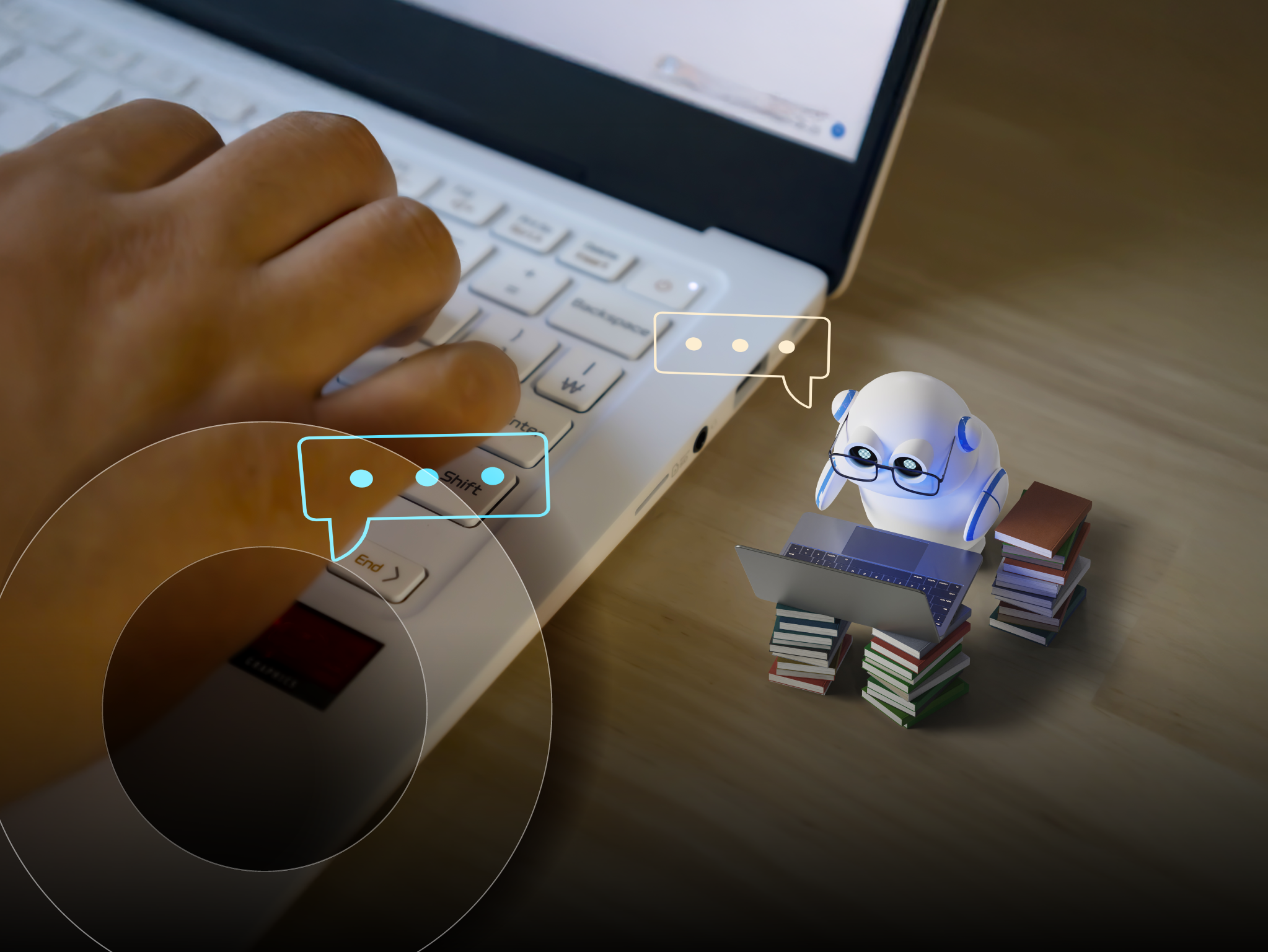5 actions higher education institutions must take to modernize student learning spaces:
How to create experiential environments that align with how your students learn

The way students learn in higher education is evolving, and the classrooms of the past just aren’t going to cut it.
Professors can no longer be expected to stand in front of the class for an entire lecture while students listen in the background and write every word down.
Technologies like virtual reality (VR), augmented reality (AR), and esports have altered the higher education landscape, and schools are ready to embrace this digital movement by creating new and dynamic personalized learning spaces and experiences for their students.
But it’s one thing to have these grand plans. It’s another to implement them.
How do you transition through technology innovations? How do you change the physical environment and reorient your space accordingly? And, if you have limited resources, how do you pay for it and manage it all?
There’s a lot of information to digest, and it can be even more challenging if you don’t know where to begin. Fortunately, we’ve got you covered.
Here are five things you must do to design personalized experiential learning spaces in higher education.
1. Assess how today’s students want to learn
Students are keen to utilize new classroom learning technologies, but not everyone learns the same way. Therefore, you must create spaces that are functional and educational for every type of learner. So, get your internal stakeholders involved early.
Engage with your students to find how they learn and how they prefer to acquire information, and bring those opportunities into the classroom. Start an open dialogue with these individuals – through activities like focus groups, surveys, and town halls – and gather as much information as possible. Be sure to also include professors and other faculty members in the discussion.
If you need help identifying your students’ learning needs, our education strategy team is available and consistently tracking the evolving edtech landscape. We will work with you to research and conceptualize your desired personalized learning spaces environment. Since your students’ expectations are shifting almost as quickly as the technology they use, we’ll make sure your school can keep up.
2. Evaluate your space and embrace multifunctionality
Look at your current physical environment. What’s working and what’s not working? Are you taking full advantage of the space? How can you maximize the learning experience? These are all important questions to ask.
Ultimately, you want to use what you have as much as possible. Identify where you can easily reconfigure your space or make slight adjustments to substantially enhance your students’ personalized learning experiences. Designing a space that’s both flexible and conducive to multifunctionality is your best bet.
Consider looking at creative companies like Google and Facebook for inspiration. These places are already trialing new ways to enrich the customer experience via tactics like metaverse games with NFT rewards, experiences to reward loyal “real world” customers, and digital twins of physical goods.
At SHI, we can reshape your physical education environment with construction, furniture, lighting, and the IT to support it all. We often partner with higher education institutions to revamp IT environments like STEM labs and make them dual use for esports or AR/VR. We work with partners such as Spectrum, who have redesigned and enhanced physical educational spaces for over 50 years, to make these modifications happen. Together, we will assist you in planning and implementing the learning environment that is right for you and your students.
3. Develop and execute your procurement plan
There are several grants currently available to fund technology and educational advancement in higher education. Most of these grants come from federal agencies like the U.S. Departments of Education, Defense, and Health and Human Services, as well as the National Science Foundation.
The SHI Grants Team is readily available to help you identify your funding needs and provide guidance on specific applications where you have the best shot at an award. Besides federal grants, you can also seek funding from businesses and organizations affiliated with your academic institution that may also benefit from your personalized learning facilities and student resources.
When it comes to procuring your facility and IT resources, consider a contract or cooperative purchasing vehicle that provides the greatest flexibility and best costs for products and services. For example, SHI’s OMNIA cooperative agreement lets higher education institutions take advantage of large volume discounts across all manufacturers with a wide variety of technology solutions, including computers, monitors, peripherals, storage devices, networking equipment, software, and media supplies.
4. Build out your environment
Once you know what your students and educators want for their personalized experiential learning environment, and you have the funding and procurement mechanism to make it happen, you can start to build it out. This includes developing renderings and redesigns of your educational spaces and encapsulating everything from lighting and flat panels to furniture and even charging stations. Make sure you empower educators during this process through customized professional development dedicated to the most effective learning solutions and how to use these new spaces most efficiently.
Many institutions that build new personalized experiential learning spaces never think about how to leverage these facilities with other stakeholder organizations or the citizenry at large. SHI can help you identify ways to market your spaces and partner with other organizations that may want to utilize them. For instance, we partnered with Post University to build an esports arena and engage in curriculum and program sharing with the University of Connecticut. Eventually, the latter started sending their students to Post for esports-related courses and competitions.
5. Utilize managed services for efficiency and cost savings
New technology products and solutions require upkeep and IT support. Unfortunately, you may not have the resources to manage the procurement, deployment, and maintenance of your creative spaces IT. We’ve got you covered there as well.
From acquisition to configuration and deployment to device support and end-of-life asset recovery, we support your hardware lifecycle, helping you stay ahead of potential supply chain disruptions, while ensuring you meet sustainability and compliance goals.
SHI’s IT lifecycle services can help you keep costs down from a procurement and personnel standpoint. Our experts will help you get the right software and software as a service (SaaS) solutions to the right users at the right price. From license advisory and volume licensing management to optimizing contract terms and helping manage renewals, our services span the entire software contract lifecycle
Lastly, SHI delivers comprehensive IT asset management (ITAM) and software asset management (SAM) solutions. These services provide the visibility and insights you need to manage your hardware, software, SaaS, and cloud environments.
Meet your evolving education needs
Year after year, the needs in education continue to grow and evolve. But, at the heart of it all is a simple question: How do students learn most effectively?
Now more than ever, you must offer learning environments that enable your students to thrive today – and to become successful professionals tomorrow. Connect with our education strategists to get started today.




